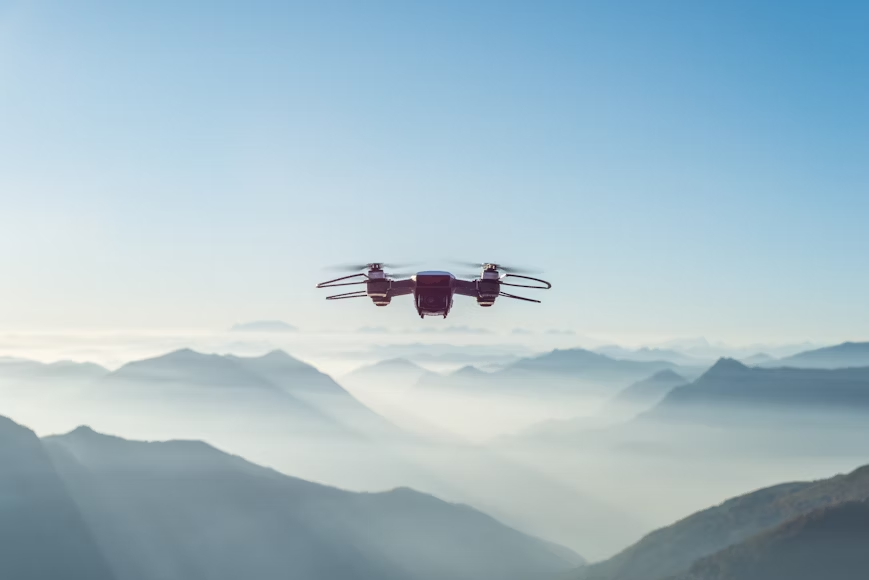It’s the elephant in the room no one is talking about…
The unmanned vehicles industry is exploding. From commercial drones to automated ground vehicles, the market size has reached $36.41 billion in 2024 and is expected to skyrocket to $125.91 billion by 2032.
But underneath the headlines about growth and innovation, there’s a looming problem: regulatory challenges. Liability issues, jurisdictional headaches, and a complete lack of clear guidance are creating massive roadblocks that could make or break the industry.
These aren’t just minor setbacks. They’re existential threats to many in the unmanned vehicles space.
What you’ll learn:
- The Liability Insurance Nightmare Every Company Faces
- Why Federal vs State Rules Are Creating Chaos
- How Security Concerns Are Shutting Down Operations
- The Insurance Requirements That Are Breaking Budgets
The Liability Insurance Nightmare Every Company Faces
Let’s start with a fact that will blow your mind…
Half of all industry respondents said liability concerns are the top challenge facing unmanned vehicles today (source: Statista). That’s not just a problem — that’s a consensus.
Liability in the unmanned vehicles industry is a minefield. And traditional insurance is all but useless.
Most liability insurance policies are designed for manned vehicles and assume human control.
How do you prove liability in unmanned vehicle incidents?
Is it the manufacturer’s fault? The software company? The deploying company? The owning company? The operating company?
Pick your poison. Insurance companies and lawyers will spend decades litigating this.
To make matters worse, there’s no clear roadmap for procuring liability insurance either. Unlike manned vehicles, liability for unmanned vehicles involves complex questions of control, autonomy, and human oversight.
Look at the case of operator liability:
Insurance companies expect proof of operator certification and compliance with local, state, and federal regulations. It’s a multi-tiered hoop-jumping exercise to even qualify for coverage.
As a result, companies are getting slapped with liability insurance premiums in excess of $500,000 just to get basic coverage. And it’s not just the costs — many clients and contracts demand proof of insurance before even discussing business opportunities.
So there’s an additional barrier to entering the market beyond the sticker shock.
Why Federal vs State Rules Are Creating Chaos
Buckle up, because this one’s a doozy…
Over a third of all industry professionals report reconciling federal vs state regulatory jurisdictions is a major difficulty (source: Statista). Hint: The actual number is closer to 100%
Let’s paint a picture of this jurisdictional nightmare:
At the federal level, there are agencies like the FAA controlling airspace and NHTSA with vehicle safety standards. And at the state level, each one of 50 states gets to add its own little cherry on top of the regulation sundae.
The result? Companies operating in multiple states have to comply with dozens of different rule sets. It’s a logistical and legal nightmare.
In Pennsylvania, new laws were enacted to allow autonomous vehicles to operate without human intervention in designated areas. Yet in other states, companies still must follow human control requirements at all times.
It’s madness.
So how does a company working with advanced unmanned vehicles in a mixed human-autonomy capacity find a reliable cube pilot partner in North America?
By working with a provider who specializes in navigating these complex layers of federal and state regulations for unmanned vehicles and guaranteeing compliance in all operations.
Companies have three choices in the face of this:
- Only operate in friendly states, severely limiting reach
- Hire legions of lawyers to track regulations
- Noncompliance risk and the consequences
The cost and hassle will cripple many companies.
How Security Concerns Are Shutting Down Operations
Here’s what unmanned vehicle operators worry about day and night…
Cybersecurity threats.
It’s a problem that’s absolutely getting overlooked:
Unmanned vehicles are computers on wheels (or in the sky). Wi-Fi, radio signals, software, cloud data — all potential cyberattack vectors.
Do they have the robust security protocols to counter this?
Here are the major data security and privacy issues:
- Data privacy. Unmanned vehicles collect terabytes of data. Who has access? Is it encrypted? What if it gets hacked?
- Hacking risks. Bad actors can take control of unmanned vehicles remotely. Hijacked delivery drones? Yes, please.
- National security concerns. Countries banning specific unmanned vehicle manufacturers. Two U.S. states even banned Chinese company DJI’s drones in May 2023 over data leak concerns.
These aren’t hypotheticals. In fact, the Department of Commerce is actually soliciting comment on unmanned aircraft systems regulatory rulemaking to address “unacceptable risks to U.S. national security.”
The Insurance Requirements That Are Breaking Budgets
Let’s be honest with each other for a minute…
Insurance is a brutal landscape for unmanned vehicles.
While the FAA may not strictly require insurance for drone operations, imagine running a commercial unmanned vehicle company without insurance. You’re basically asking for disaster.
Most commercial unmanned vehicle operators need a patchwork quilt of coverages:
- Liability insurance for property damage and injuries
- Hull insurance for the vehicle itself
- Payload insurance for specialized equipment
- Cyber liability insurance for data breaches
The costs? All over the map. Because insurers have no idea how to price these risks.
It gets even more fun:
Suppose you’re insured and have a claim. You better have Remote ID-compliant unmanned vehicles or your insurance company will throw out your claim. Because in 2024, the FAA started enforcing Remote ID compliance as part of its safety mandate.
What This Means for the Industry Moving Forward
The unmanned vehicles industry is at an inflection point.
There’s no denying the tech advances and sheer scale of market growth. The industry is registering over 1,000 commercial drones with the FAA per week.
But behind the scenes, these four regulatory challenges are slowing progress:
- Insurance costs and complexity are skyrocketing
- Federal and state jurisdictions are a compliance headache
- Security risks are a safety and business continuity concern
- Liability is a minefield of lawsuits and red tape
In other words, unmanned vehicles companies that survive are the ones that master regulatory compliance first.
The bar is only going to get higher. Regulations will become more onerous. The technology will continue to improve. The winners in the unmanned vehicles industry are the companies that stay steps ahead of these regulatory challenges.
Turning Challenges Into Opportunities
The good news is this:
Smart companies are finding opportunities in these regulatory hurdles.
The first step is adapting instead of waiting for perfect regulations. Companies that invest in compliance and legal infrastructure will thrive in the new normal.
Some are taking it a step further — they’re working directly with regulators to help shape the rules. Yes, you read that right. Instead of waiting on regulators to dictate the terms of unmanned vehicles regulations, the leading companies are joining the conversation.
And some are innovating within these confines — creating technology solutions that help companies adapt and comply.
The bottom line:
Regulatory challenges aren’t something to wait out. They’re a game of positioning. The unmanned vehicles industry is moving too fast for companies that aren’t fully prepared.
Companies that lead the charge in regulatory compliance and adaptation will be the ones that rule the industry for the next decade.
And in the unmanned vehicles industry, staying ahead of the curve isn’t just smart business, it’s survival.
Conclusion: Navigate or Get Left Behind
The unmanned vehicles industry is in the midst of rapid growth. But the regulatory challenges of liability insurance, federal vs state rules, security concerns, and insurance requirements are game-changing.
They’re reshaping which companies can succeed in the unmanned vehicle industry. The lesson is clear for unmanned vehicles companies: regulatory compliance and adaptation is table stakes.
The winners in the unmanned vehicles industry are the companies that figure out the regulatory roadmap first. Because in the unmanned vehicles industry, regulatory compliance isn’t just about following rules. It’s about unlocking opportunities competitors can’t access.

